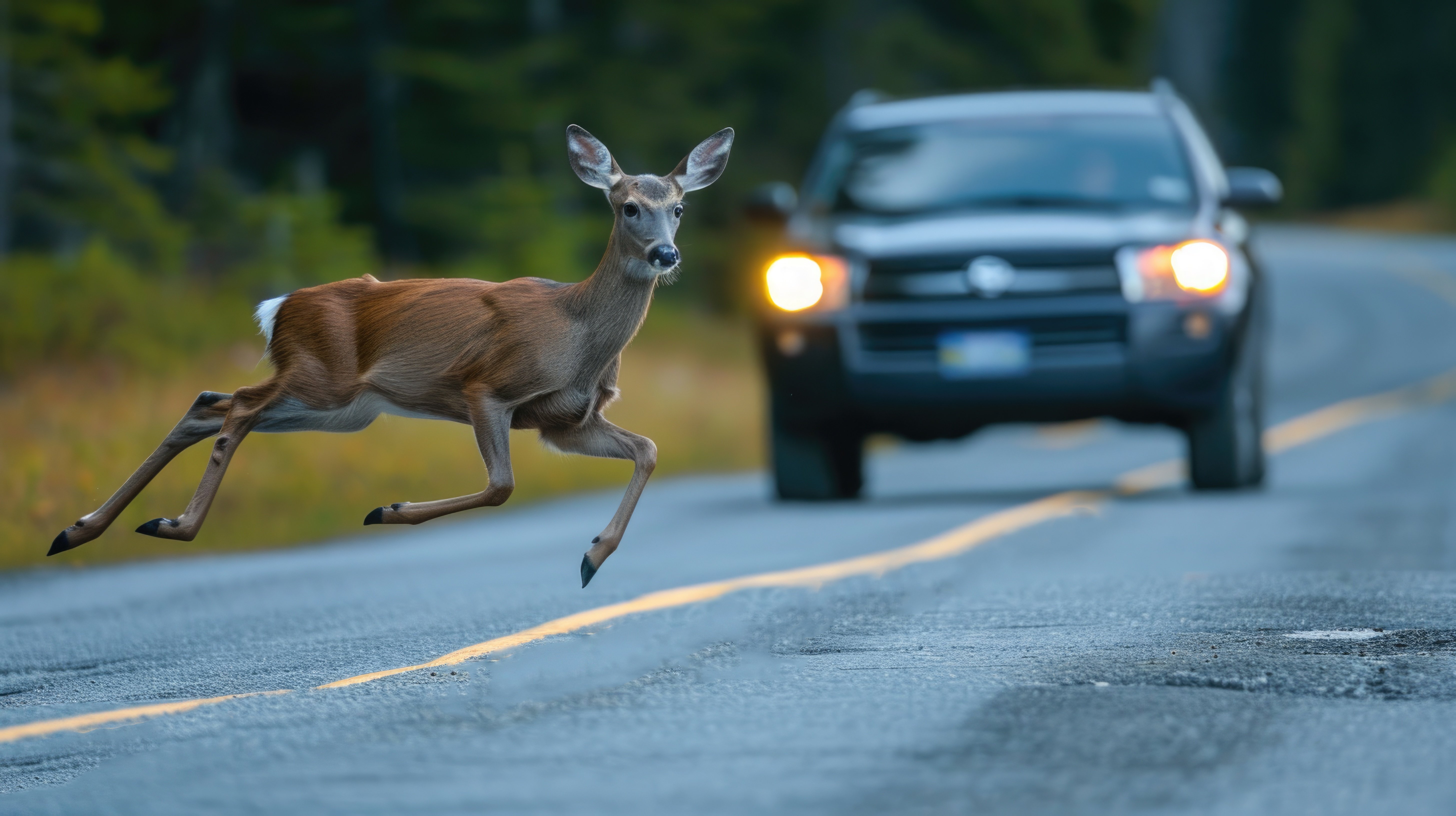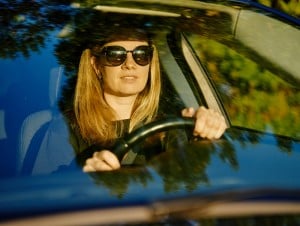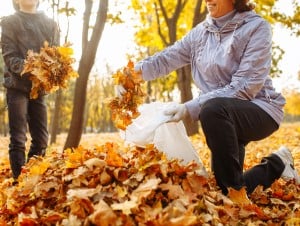Fall Driving Tips
Deer and leaves among seasonal hazards
Avoid Hitting Deer
Fall is breeding season for deer so they will be more active near roads, especially around dawn and dusk. Deer often travel in groups. If you see one, you will likely encounter others. Be extra careful near deer crossing signs.

Be Prepared for Changing Light

Sun Glare
- The changing season brings the sun closer to the horizon, which keeps it pointed straight into your eyes and makes it more likely to reflect at low angles off other cars, buildings or windows.
- The bright sun often creates a large amount of glare, making it difficult to see other vehicles, the road or the shoulder.
- Always keep a pair of sunglasses in your vehicle and wear them during these times.
Shorter Days, Dark Commute
- Make sure all of your vehicle's lights are working.
- Don't look directly into the lights of oncoming traffic.
- Keep your windshield clean so dirt doesn't add to the glare.
- Give your eyes time to adjust to the dark, between two and five minutes, before hitting the road.
Fall Hazard: Leaves

Slow down if you are driving on a road covered with leaves, especially when driving around turns. Wet leaves can get extremely slippery, making the driving conditions similar to driving on ice. Increase your following distance to allow yourself plenty of time to stop.
Be aware of visibility issues. Leaves make it difficult to see potholes, bumps in the road or road markings.
Never drive through a leaf pile. A pile of leaves raked to the side of the road is an inviting place to a child. Children enjoy jumping into the leaf piles or burrowing down into them and hiding. A leaf pile can also hide objects that can damage your car, such as a rake.
Keep your windshield leaf free. This will keep wet leaves from getting stuck under the windshield wiper blades.
Never park over a pile of leaves. Parking in a leaf pile creates a fire hazard from the exhaust system or catalytic converter.
Source: SafetyFirst

